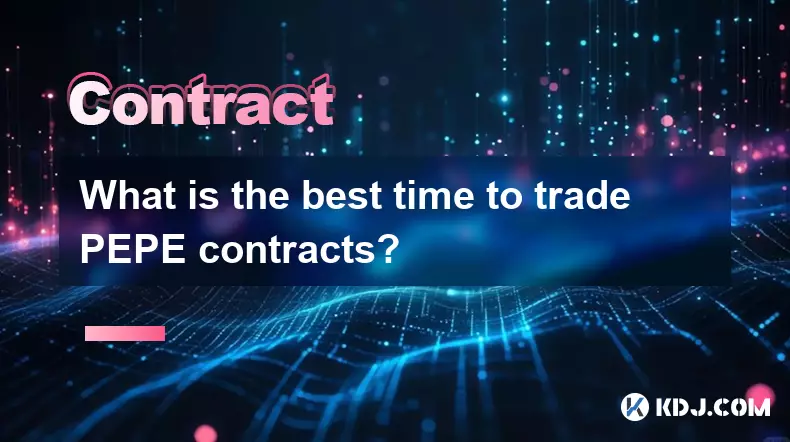-
 bitcoin
bitcoin $122288.232522 USD
0.16% -
 ethereum
ethereum $4480.662914 USD
-0.22% -
 xrp
xrp $2.962747 USD
-2.32% -
 tether
tether $1.000120 USD
-0.05% -
 bnb
bnb $1145.654223 USD
-2.07% -
 solana
solana $227.105217 USD
-1.67% -
 usd-coin
usd-coin $0.999548 USD
-0.02% -
 dogecoin
dogecoin $0.250875 USD
-2.04% -
 tron
tron $0.340654 USD
-0.49% -
 cardano
cardano $0.837968 USD
-2.52% -
 hyperliquid
hyperliquid $48.960449 USD
0.06% -
 chainlink
chainlink $22.049280 USD
-1.33% -
 ethena-usde
ethena-usde $1.000404 USD
0.02% -
 sui
sui $3.586212 USD
0.20% -
 avalanche
avalanche $29.894916 USD
-4.18%
What is a leveraged contract for currency speculation?
Leveraged contracts for currency speculation allow traders to amplify both potential profits and losses by borrowing funds to increase their market exposure.
Dec 16, 2024 at 11:56 am

A leveraged contract for currency speculation is a financial instrument that allows traders to speculate on the price movements of currency pairs by borrowing funds from a broker or exchange. This enables them to gain exposure to the market with a higher degree of leverage, potentially amplifying both profits and losses. Leveraged currency contracts come in various forms, including futures, options, and contracts for difference (CFDs).
Key Features of Leveraged Currency Contracts:- Leverage: Leverage is the ratio of borrowed funds to the trader's own capital. Higher leverage magnifies potential returns but also increases the risk of significant losses.
- Margin: Margin is the initial deposit required to open a leveraged position. It serves as collateral for the borrowed funds.
- Underlying Asset: Currency pairs are the underlying assets for leveraged currency contracts. Traders speculate on the price movements of these pairs, such as EUR/USD or GBP/JPY.
- Opening a Position: Traders typically open leveraged positions by placing a margin deposit with the broker or exchange. The leverage ratio determines the amount of exposure gained with the initial deposit.
- Leverage Calculation: Leverage is calculated as the ratio of the contract value to the margin deposit. For instance, if a trader deposits $1,000 and opens a position with a contract value of $10,000, the leverage would be 10:1. This means that the trader effectively controls $10,000 worth of currency with only $1,000 of their own capital.
- Managing Positions: Traders can monitor the performance of their leveraged positions through trading platforms. They can adjust or close positions based on market conditions and risk tolerance.
- Profit and Loss: Profits and losses are calculated based on the price movements of the underlying currency pair. If the price moves in the trader's favor, the profits are amplified by the leverage ratio. Conversely, if the price moves against the trader, the losses are also magnified.
- Margin Calls: If the market moves significantly against the trader's position and the margin account falls below a certain threshold, the broker or exchange may issue a margin call. This requires the trader to deposit additional funds to maintain the position or risk having it liquidated to cover losses.
- Increased Profit Potential: Leverage can enhance profit margins by allowing traders to control a larger position size with a smaller initial investment.
- Amplified Losses: Leveraged positions can lead to substantial losses, especially in volatile market conditions. Traders should carefully manage their risk exposure to mitigate potential losses.
- Margin Calls: Margin calls can force traders to deposit additional funds or liquidate positions, potentially resulting in significant financial repercussions.
- Volatility Risk: Currency markets can be highly volatile, and leveraged positions can magnify this volatility, leading to unpredictable price fluctuations.
- Counterparty Risk: Leveraged currency contracts involve borrowing funds from a broker or exchange, which introduces counterparty risk in case of the counterparty's default or insolvency.
Leveraged contracts for currency speculation offer traders an opportunity to gain exposure to foreign exchange markets with increased leverage. However, it is crucial to understand the risks associated with leverage and manage positions prudently. Volatility, margin calls, and counterparty risk can significantly impact the outcome of leveraged trading strategies. Traders should thoroughly research and consider their risk tolerance before engaging in such transactions.
Disclaimer:info@kdj.com
The information provided is not trading advice. kdj.com does not assume any responsibility for any investments made based on the information provided in this article. Cryptocurrencies are highly volatile and it is highly recommended that you invest with caution after thorough research!
If you believe that the content used on this website infringes your copyright, please contact us immediately (info@kdj.com) and we will delete it promptly.
- BlockDAG, DOGE, HYPE Sponsorship: Crypto Trends Shaping 2025
- 2025-10-01 00:25:13
- Deutsche Börse and Circle: A StableCoin Adoption Powerhouse in Europe
- 2025-10-01 00:25:13
- BlockDAG's Presale Buzz: Is It the Crypto to Watch in October 2025?
- 2025-10-01 00:30:13
- Bitcoin, Crypto, and IQ: When Genius Meets Digital Gold?
- 2025-10-01 00:30:13
- Stablecoins, American Innovation, and Wallet Tokens: The Next Frontier
- 2025-10-01 00:35:12
- NBU, Coins, and Crypto in Ukraine: A New Yorker's Take
- 2025-10-01 00:45:14
Related knowledge

What is the difference between futures and perpetual contracts for Bitcoin?
Oct 02,2025 at 11:54pm
Understanding Bitcoin Futures Contracts1. Bitcoin futures are derivative instruments that allow traders to speculate on the future price of Bitcoin at...

What is the best time to trade PEPE contracts?
Oct 03,2025 at 11:54am
Understanding PEPE Contract Volatility1. PEPE contracts exhibit extreme price fluctuations due to their meme-based nature and low market cap. Trading ...

What are the common mistakes to avoid with Bitcoincoin contracts?
Oct 03,2025 at 08:54am
Emerging Trends in the Cryptocurrency Market1. Decentralized finance (DeFi) platforms continue to expand their influence across the blockchain ecosyst...

What is the maintenance margin for Bitcoin contracts?
Oct 02,2025 at 01:36am
Decentralized Exchanges Gain Momentum in 20241. Decentralized exchanges (DEXs) have seen a significant rise in trading volume, surpassing centralized ...

How to use technical analysis for trading XRP contracts?
Oct 03,2025 at 01:18pm
Understanding Price Patterns in XRP Futures1. Identifying chart patterns such as triangles, head and shoulders, and double tops or bottoms can provide...

What does "longing" PEPE contracts mean?
Oct 03,2025 at 11:54pm
Understanding Decentralized Exchanges in the Crypto Ecosystem1. Decentralized exchanges (DEXs) operate without a central authority, allowing users to ...

What is the difference between futures and perpetual contracts for Bitcoin?
Oct 02,2025 at 11:54pm
Understanding Bitcoin Futures Contracts1. Bitcoin futures are derivative instruments that allow traders to speculate on the future price of Bitcoin at...

What is the best time to trade PEPE contracts?
Oct 03,2025 at 11:54am
Understanding PEPE Contract Volatility1. PEPE contracts exhibit extreme price fluctuations due to their meme-based nature and low market cap. Trading ...

What are the common mistakes to avoid with Bitcoincoin contracts?
Oct 03,2025 at 08:54am
Emerging Trends in the Cryptocurrency Market1. Decentralized finance (DeFi) platforms continue to expand their influence across the blockchain ecosyst...

What is the maintenance margin for Bitcoin contracts?
Oct 02,2025 at 01:36am
Decentralized Exchanges Gain Momentum in 20241. Decentralized exchanges (DEXs) have seen a significant rise in trading volume, surpassing centralized ...

How to use technical analysis for trading XRP contracts?
Oct 03,2025 at 01:18pm
Understanding Price Patterns in XRP Futures1. Identifying chart patterns such as triangles, head and shoulders, and double tops or bottoms can provide...

What does "longing" PEPE contracts mean?
Oct 03,2025 at 11:54pm
Understanding Decentralized Exchanges in the Crypto Ecosystem1. Decentralized exchanges (DEXs) operate without a central authority, allowing users to ...
See all articles










































































